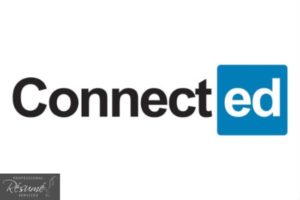When many people think about building a brand, they think about actual companies promoting their brand to drive business. However, executives today have to build their own personal brand as well. Building your brand online can take a significant amount of time and effort, and it won’t happen overnight. Your online brand is how people perceive you in real life, so it’s worth taking c-level personal branding seriously. Here are some of the best ways you can build your brand online.
Be Active on Social Media, But Not Too Active
Social media is great for building your executive brand, but it can also come crashing down in a hurry if you aren’t careful. You also want to limit the amount of platforms you use to just a few so you don’t spread yourself too thin. Having too many social media accounts to manage can become overwhelming very quick.
When it comes to your level of activity on social media, you always want to keep your brand in mind. Any time you think about posting something, consider whether it hurts or helps your brand. By considering this every time, you’ll manage your level of activity and only post relevant items reinforcing what you want to be known for.
Embrace LinkedIn
Having a strong executive LinkedIn profile is possibly the best way to build your brand online. One of the first places recruiters go to find executives is LinkedIn. If your LinkedIn profile needs some serious updates, you may consider looking into a service to help you. You definitely won’t be able to build your brand online the right way if you don’t use and embrace LinkedIn.
Use Strategic Keywords to Get Discovered
Keywords on your LinkedIn profile or other online platforms can help you get discovered. This also means you have to be extremely careful about what you post online. There is no separating personal matters from business matters online, so everything you say is tied to your overall brand.
Always Reinforce What You Want to be Known For
Every executive has unique qualities, including you. When you’ve determined what those qualities are, emphasize them on your LinkedIn profile, your resume and anywhere else. This reinforcement can help with your c-level personal branding and help you get recognized by the right people and companies.
Professional Resume Services thrives in helping people build their brand online. Whether it’s updating your executive LinkedIn profile, optimizing your resume or brainstorming new branding strategies, we are here to help. Feel free to contact us at any time for assistance on building and maintaining your brand online.
LinkedIn offers so many features, but it can be difficult to know which ones to use and how to use them. The reality is many executives aren’t using the right features, and some of the features they are using aren’t being used properly. Your executive LinkedIn profile is many times the first thing a recruiter will see about you. When you use these important features in the right manner, you’ll set yourself up to land the job you desire.
 LinkedIn Groups
LinkedIn Groups
The more LinkedIn groups you join, the better off you’ll be. You can join a maximum of 50 groups, and each of them can help you build your network if you utilize them properly. You just have to be somewhat active in each one and connect with other individuals with like minds. This is a great way to network and make strong connections before actually meeting them in person.
A Quality Headshot
It should be assumed that your LinkedIn profile picture should be a professional one. However, executives still sometimes put photos of them with their family, pet or taking part in some sort of activity. While those photos may mean something to you, it means nothing to recruiters. Stick with a simple quality professional headshot to make the best impression.
LinkedIn Endorsements
Don’t plan to optimize your LinkedIn profile by giving and receiving a bunch of endorsements. While LinkedIn endorsements can be somewhat silly, they can be valuable. You should only endorse people you know personally and can endorse their skills. Alternatively, you should only accept endorsements from people in the same way. Recruiters want to see the quality of your endorsements, even if it is just a handful, rather than dozens of meaningless ones.
Multi-Media Content
LinkedIn allows you to upload photos and videos to your profile, so why not take advantage of it? You may upload a short clip of you giving a speech, accepting an award, working in the community or anything else you think may boost your value and perception. Most executives don’t include multi-media content in their LinkedIn profile, but it’s a feature that could help set you apart.
Concise Headline
Most executives use the headline feature on their LinkedIn profile, but not properly. This shouldn’t be about the job you’re seeking. Instead, consider it to be a one-liner advertisement about yourself. The main goal of your headline is to entice people to keep reading, so make your headline concise and interesting.
Professional Resume Services offers services to help you optimize your LinkedIn profile. LinkedIn has many features executives don’t take advantage of, so be sure to contact us to see how you can better utilize them to help advance in your career.
No matter how you look at it, getting laid off from your job is never fun. You may have been expecting it for weeks or months, or you may have been caught completely off guard. Regardless of the circumstances, there are some things you should do and shouldn’t do immediately following a layoff.
You may be tempted to send out dozens of resumes and cover letters frantically in an attempt to find a new job as quickly as possible, but that could possibly be the worst strategy you can use. Instead, here are some do’s and don’ts to consider if you’ve been laid off.

Don’t Feel Sorry For Yourself
Feeling sorry for yourself and telling others about it doesn’t move you forward. Getting out of your rut of being laid off can be difficult, but it’s a necessity. If you must, take a day to reflect on the situation, but then let it go. Visit an executive resume writing service for professional help on brushing up your resume. The professionals there can give you words of encouragement based on experience, since they work with all types of clients and have plenty of success stories to share.
Take a Break Before Starting Your Job Search
You should take a little break before immediately jumping into your next job search. It’s human nature to take a little while to rebound from a layoff, so you need to make sure your mind is in the right place before you start talking to potential employers. This downtime would be the perfect window to optimize your LinkedIn profile, but give yourself enough time to recover before making connections.
Reconnect With Your Network
Reconnecting with your network is something you should do even before you send out dozens of resumes and cover letters. Be sure to optimize your LinkedIn profile first, though, so your connections know exactly what you’re up to when you reach out to them.
Take Time to Devise or Revise Your Career Plan
You may have been taken by surprise with your recent layoff, so take some time to come up with a new career plan. That may involve incorporating multiple streams of income or switching industries completely. Your opportunities are endless, so take all the time you need to put together your next career plan!
Professional Resume Services works with people who have been laid off all the time. Our executive resume writing service excels at helping people get back on their feet and into the jobs they want. Feel free to contact us if you need help following your layoff.
While most companies are hiring professionals and executives throughout the year, the summer months tend to be a little slower. With people taking time off to go on vacation and spending time away from the office, the hiring process takes a little longer than usual. For job seekers, this is the perfect time to clean up your executive LinkedIn profile. Most people don’t spend enough time updating their profile, which could have a few downfalls. Here are some tips on how to clean up yours this summer.
Update Everything
Read your entire executive LinkedIn profile word-for-word and update anything that has changed. Chances are you’ll think about several skills or experiences you’ve developed or had since your last profile update. Having updated information about yourself is one of the keys to the best LinkedIn profile development.
Filter Through Your Endorsements
You may have gotten several LinkedIn endorsements from friends or family that simply aren’t relevant to executive jobs you’re looking for. The amount of endorsements you have isn’t nearly as important as the quality of the endorsements. Filter through all of them and remove any of the unimportant ones so a recruiter will see only the relevant endorsements.
Focus on Your Summary
The summary section is the place where you sell yourself to potential recruiters and connections. If you aren’t a strong writer, you can always reach out to a professional LinkedIn profile writer for assistance. The summary needs to be specific and straight to the point without a lot of fluff. Writing the best LinkedIn summary is an art, so seek help if you need it.
Keep Your Profile Straightforward
Your executive LinkedIn profile should be treated differently from your executive resume, but they do have some similarities. Don’t use a lot of filler words on your LinkedIn profile just to make it longer. Being clean and concise with your words will look more impressive to a recruiter than having to scroll down through blocks of text. If you’re actively looking for a job, make it clear. If you’re currently employed but keeping your options open, make that clear as well.
Professional Resume Services is here to help you with your LinkedIn profile development this summer. Whether you need advice on tidying up your profile, or if you need a professional LinkedIn profile writer, feel free to reach out to us at any time.
Networking seems so simple, but so tricky at the same time. Many professionals and executives believe they will have easy access to a job if there is a family member or friend in the company. However, this isn’t necessarily true. And even if it is partially true, you have to be careful how you approach the situation.
 When it comes to personal branding for senior level managers, always having a professional approach is critical. You could be putting your family member’s or your friend’s reputation on the line by asking for a favor. Here are other things to consider.
When it comes to personal branding for senior level managers, always having a professional approach is critical. You could be putting your family member’s or your friend’s reputation on the line by asking for a favor. Here are other things to consider.
Use Them, But Don’t Abuse Them
There’s no harm in asking someone you know to help you get your foot in the door. But you don’t want to make them go out of their way and potentially damage their own reputation and success on your behalf. As you know, c-level personal branding takes a lot of time and effort to build, but can be damaged instantly. Don’t abuse your close connections by pressuring them to fight for you, especially if you may not be completely qualified.
Verify Your Qualifications First
The best thing you can do right away is ask your close connections whether you are qualified for a position they have available. You should also learn how to optimize your LinkedIn profile before you even reach out to them, just so your information is current. The worst thing that can happen to both your reputation and your friend or family member’s is to make the effort to get your foot in the door, only to find out you don’t meet the necessary qualifications.
Understand Their Risk in Helping You
Family and friends can boost your networking efforts, but also take into consideration the risk they are taking in helping you. They’ve worked hard to get in the position they are in just like you have. If they recommend you and you don’t fit with the company for some reason, their own c-level personal branding could take a hit. Sometimes it’s not worth the risk for them, so take that into consideration before asking any favors.
Professional Resume Services can help you with your networking efforts. Whether you need to learn how to optimize your LinkedIn profile or brush up your resume, we are here for you when you need us. Feel free to reach out to us at any time.

If you are an executive, then you should be on LinkedIn. Don’t think of it as just another social media website because it is not. It is a networking site for business professionals, and simply having a presence can improve your visibility tremendously. Many executives are finding that out the easy way.
Here are 5 solid reasons you should be on LinkedIn right now:
- Many professionals find their next job through contacts they meet on LinkedIn. The social network used to be considered the place to go when you wanted to find a job. Today, it’s much broader than that, but the networking possibilities are endless. And they often lead to better employment prospects.
- It’s a great place to generate leads for your business.
- You have the ability to share your content with your target audience seamlessly. If you are a blogger or routinely craft content on third party websites, you can share it on LinkedIn and reach your professional audience easily. No fighting through the noise on Facebook and Twitter.
- You can publish your articles on LinkedIn and give them wider visibility. You own all your content and can take it with you when you leave–if you ever leave.
- LinkedIn profile page acts like a professional online CV. Every time you make a career move–whether you change jobs, receive a certification, take a career enhancement class, get published, or earn an award for your professional achievements–you can add that to your LinkedIn profile. People do read them, and they do take notice.
Every executive should have a presence on LinkedIn, from CEO down to the middle manager who wants to be CEO.

The photo you use for your profile on social media and professional sites is prime real estate. This is the face of your online brand, right? This picture is what comes up on an internet search by a potential employer, colleagues looking at your LinkedIn profile, and networking contacts. People are normally visually-oriented, and that profile pic is what their eyes go to first. So why waste that advantage?
- No profile pic at all is like saying you don’t care — so why should they care?
- Using a logo markets that logo, not your career
- Poorly lit, grainy photos don’t say much about your professionalism
- Selfies rarely look like anything but selfies (and please, NO FISH LIPS!)
- Wild party profile pics look like HR nightmares
- Your kid is cute, but they aren’t hiring your baby. The sames goes with pics of you and your significant other. Don’t use those for your professional pic–unless you co-own a business together and are building your brand based off of that
- Using a different profile pic for each site weakens the impact of your brand
If you want to maximize the potential of your profile pic, think seriously about what it looks like and where you put it.
Having the same photograph as the face of your online brand on all your profiles; LinkedIn, Facebook, Twitter, your blog, etc. gives you consistency. People associate consistency with reliability, and that instant recognition of your photo acts as a logo for your brand. But the photograph itself also matters quite a bit, so it should be excellent. You can set up proper lighting and background then use a timer, but it generally will work much better if a photographer friend takes your picture or you opt for a professional session.
Background should reflect your industry or be a color flattering to you. Lighting should come from several sources to avoid weird shadow effects (this is why self-portraits rarely work well) and smiling is more appealing than a deadpan mug shot. You should be dressed the way you would be at a job interview and look professional. It’s a good idea to renew your profile pics once a year so they are current.
Your online brand is a combination of everything someone like a potential employer can find about you on the internet. Your profile pic is the face of your online brand, and profile development should include making sure you aren’t wasting its potential.

It isn’t summer yet, but it soon will be time for the teenage job market to open up for high schoolers looking to start their working careers. Even though these first jobs will probably not become careers, there are a lot of ways the first job does shape the habits and expectations you have about the working world. Some of the standards have always been there: Getting to work on time, not goofing off on the job, doing what you are hired to do, and being trustworthy have always been part of the picture.
But today’s teens are already networking and have a social media presence long before they start thinking about earning a paycheck. Because they are so familiar with digital interactions, and because they are immature, the idea that what they say and do online will affect their future is hard to grasp. It isn’t uncommon for someone to suggest their child work in a friend’s business and find out that their kids’ online activities were unacceptable for the position’s standards. How embarrassing is that?
If you have made an effort to continually ask questions like “Can social networking get you fired?” and listen to your child’s answers, you begin to see what their perspective of online activities is. Pointing out the realities, cases where that behavior did cost a job, furthers the discussion. Start talking about how important online branding is and what it is. Challenge them to do their own research and prove you wrong when you say that employers will look them up online.
This can go a lot of directions every time you have the conversation. Cyber-bullying, sexting, and all the rest of it are hopefully going to come up so you can hear what your teen has to say and tell them what you’ve learned. Online behavior didn’t used to be on the “getting your teen ready to have a job” list, but these days it is probably up in the top priorities.








